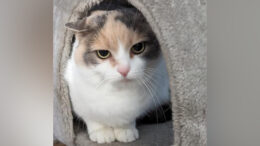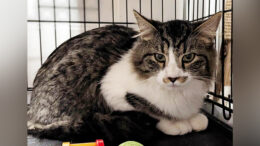In order to care for indoor winter holiday plants, first consider some houseplant basics. Plants in small pots dry out quickly. Most homes have a low relative humidity during the post-holiday heating season, so adequate watering is crucial. Overwatering is just as harmful as underwatering. Houseplants should not be watered until the potting media is dry to the touch. Check for this daily, then apply water till some drains from the bottom of the pot. Discard water that drains through the pot. Protect your furniture with a saucer or a plastic lid slightly larger than the pot.
Remove foil from gift plants and make sure there are drain holes in the bottom of the pot. Like you and me, most plants do not like wet feet. Lighting is also important to houseplants. Put your gift plants where they will get high levels of indirect light. Low light levels will lead to the demise of most houseplants. You may want to consider supplemental lighting for your holiday plants.
Normal household temperatures (60 to 75°F) are sufficient for most plants. High temperatures (75°F or higher) will shorten the life of your plants, while cooler temperatures (60 to 65°F) will lengthen their life. Avoid rapidly changing temperatures and keep the plants away from drafts and heating vents.
Now, let’s review the Christmas cactus, Schlumbergera spp. (formerly Zygocactus), needs. These plants are succulents and easy to care for. While they are blooming, they like the potting media moist but not soggy; remember not to overwater. Keep the room temperature warm, the light bright but indirect, and the potting media well-drained. When blooms have faded, move the plant to a cool room (50°F) and reduce watering to a minimum. When buds begin to reappear, move the plant back to the warmer room, resume watering, and lightly fertilize. Bud drop may indicate a draft or sudden temperature change. Bud drop may also signal a need for repotting or that the room temperature is too high. Christmas cacti seldom flower well at temperatures above 70°F.
A poinsettia (Euphorbia pulcherrima) is a bit more difficult to care for than the Christmas cactus. Poinsettias prefer bright, indirect light, and like the Christmas cactus, must be kept from drafts and rapid temperature changes. When the potting media starts to feel dry, water, but do not let the plant sit in water. Room temperatures should be 65 to 70°F during the day and about ten degrees cooler at night. While the plant is growing, apply a 10-10-10 fertilizer every two weeks.
To initiate flowering, on or about October 1, give the plant 14 hours of complete darkness every day until the bract color is well developed (around mid-November). Any light during the dark period will delay or inhibit flowering. You can cover the plant with a box or put it in a closet to ensure complete darkness. During the rest of the day, give the plant plenty of indirect light.
Here is an interesting poinsettia fact. If you live in USDA hardiness zones 10 to 12 (certainly not our zone 6), you can grow poinsettias outdoors. They can grow up to ten feet tall!
Finally, if you have too many plants or don’t have the time or inclination to care for them, consider passing them on to homebound folks or friends who might find them a cheerful addition to their day.
This educational blog is a series of informative articles from the Penn State Master Gardeners volunteers plus news concerning the group and their activities. For more information, click here.
































